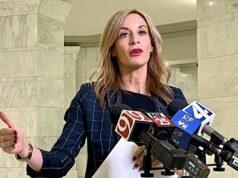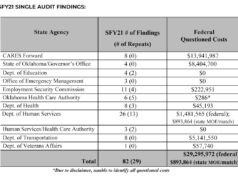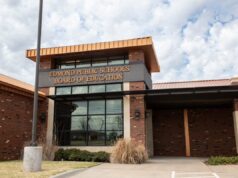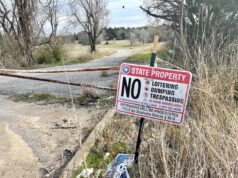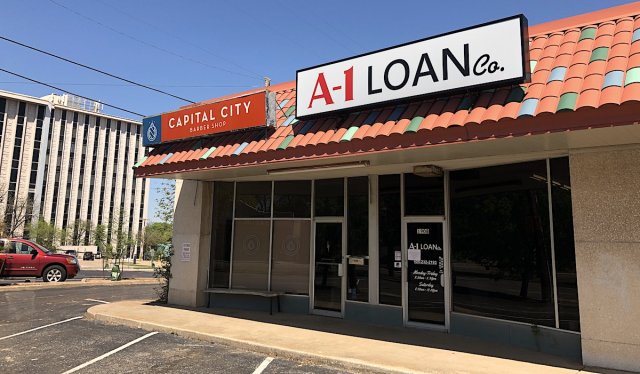
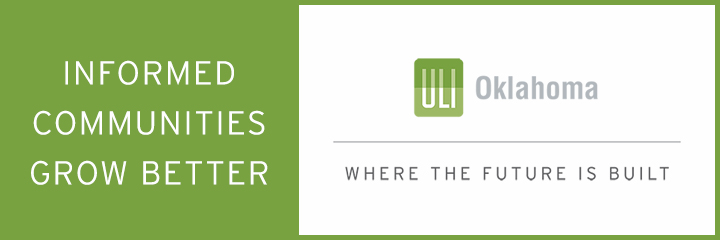
For now, Jake Phelps can catch his breath as he figures out what comes next for his business.
Phelps closed his Capital City Barbershop along North Classen Boulevard on March 21 because of the COVID-19 pandemic, even before barber shops and hair salons were shut down by Gov. Kevin Stitt’s statewide “Safer at Home” order.
Since then, Phelps hasn’t seen a single client, and neither have those who rent booth space from him. He is effectively out of a job, but the bills keep coming in.
He’s not alone. Nearly 17 million Americans have filed for unemployment in the past three weeks alone. Some analysts have predicted the country’s jobless rate could explode to levels not seen since the Great Depression.
“It’s stressful because there’s just no way of knowing how long it’s going to go on,” Phelps said. “We really have no idea when we will be able to reopen.”
Potential for loan forgiveness
Some of Phelps’ fears have been temporarily mitigated by the Paycheck Protection Program, which is part of the $2 trillion economic stimulus package passed by Congress last month.
“When it started to unfold, everyone was talking about Small Business Administration loans. But in all honesty, for most small businesses it’s just like a regular loan at 4 percent for 10 years,” Phelps said. “For me, it wasn’t wise to take out a loan like that because it would take me forever to pay off and would cut into profit when we re-open.”
Phelps later heard about a part of the stimulus package called the Paycheck Protection Program. The program allows banks to lend money to small businesses at little or no interest. If the business owner fulfills the requirements of the program, which include spending at least 75 percent of the money on payroll, the loan is forgiven. The loan is guaranteed by the SBA.
The PPP fit Phelps’ needs. He employs himself and a receptionist. The others who cut hair at Capital City are independent contractors who rent booth space.
“I had a client who works at a bank here in town, and he walked me through the whole process,” Phelps said of the PPP program. “There was a last minute change that required some more paperwork, but I got my money quickly.”
Oklahoma Bankers Association vice-president Adrian Beverage said the application process is relatively straightforward. Business owners have to fill out an application online and provide payroll records.
“The banker does everything on their end as far as uploading it into the system and waiting for approval from the SBA,” Beverage said. “If the customer spends at least 75 percent of the loan on keeping people on the payroll or bringing people back to the business who have been let go, then the loan will be forgiven by the SBA.”
As much as 25 percent of the loan can be spent on things like rent and utilities, but other expenses are off limits, Beverage said.
“Let’s say you get a loan for $100,000 and you decide you want to put flat screens and hot tubs in your office and don’t spend anything on payroll, obviously none of that loan will be forgiven,” Beverage said. “The bottom line is if you use the money the way it is intended to be used, it doesn’t have to be paid back.”
Goal is to limit long-term damage
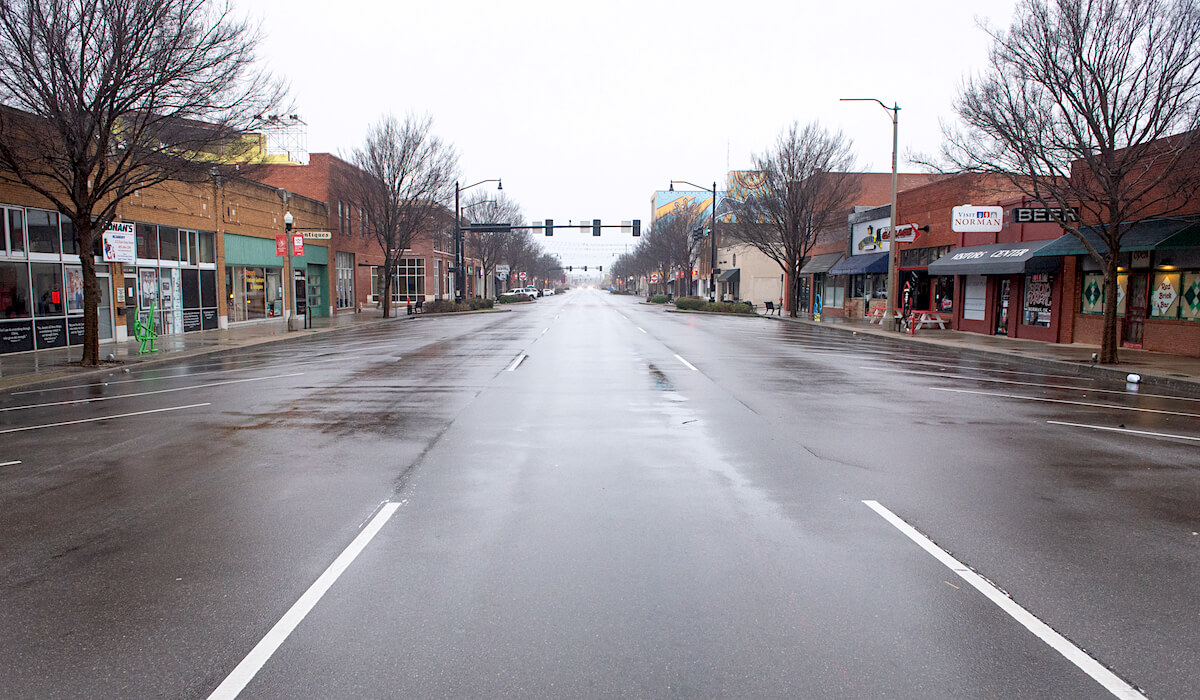
State Chamber of Oklahoma Vice President Mike Jackson said the goal of the Paycheck Protection Program is to help small businesses and, in turn, help limit the long-term economic damage done by COVID-19 closures.
“I see it as something that is helpful,” Jackson said in an interview with NonDoc earlier this month. “It is a way to keep people employed and on payrolls in the short term, which will hopefully help the economic recovery process in the long term.”
Beverage said after some initial hiccups, the process is working fairly seamlessly as it continues its roll out.
“It got off to a clunky start on April 3, but we knew it would,” Beverage said. “The banking system has never been asked to do anything like this before, and the government has never tried to do this before, so we knew it would be a rough couple of days. We’re getting more and more banks onto the system so they can start uploading applications, and the sheer volume of that is pretty large. So it’s going to take some time because of that, but every day it seems to get a little better.”
Beverage said many applicants are concerned about how long the funds for the program will last.
“People will ask, ‘What if I don’t get my application in on time and they run out of money?'” Beverage said. “They’re not going to run out of money. They still have a large portion of the initial $349 billion available, and I know Senate Majority Leader (Mitch) McConnell wants to add another $200 to $250 billion into the program.”
While the Paycheck Protection Program aims to get money directly into the hands of workers, there are other programs available for business owners through the Small Business Administration’s Disaster Loan Assistance Program.
On March 9, Oklahoma Secretary of Commerce Sean Kouplen announced the creation of the Manufacturing Reboot Program, which will provide grants ranging from $25,000 to $150,000 for qualified manufacturers to buy machinery needed to produce items for fighting the spread of the virus. Those items include medical devices, personal protective equipment and hygiene products, among others.
Kouplen said the PPP and the SBA loan programs are important tools for the state’s small-business owners. The SBA program offers loans on a 30-year term with a 3.75 percent interest rate for for-profit businesses and a 2.75 percent rate for nonprofits.
“That’s an excellent way for them to obtain long-term flexible fixed-rate capital to help their business make it through these times,” Kouplen said at an April 9 press conference.
Relief is temporary
There have been some concerns that stimulus money might not be distributed in time to stave off significant economic damage.
“There’s creativity and there’s scale, and they’re trying to do it quickly,” Tony Fratto, who served in President George W. Bush’s White House during the 2008 financial collapse, told the New York Times. “But they weren’t early enough, and there’s going to be a lot of damage because of that.”
The process was quick enough for Phelps, but he said the money he gets through the Paycheck Protection Program is not a cure-all.
“We would have gone out of business,” he said. “I don’t carry a lot of debt and I keep overhead low, so we had enough funds to last a few months without the PPP, but then we’d have to start having some conversations. This pushes that conversation back some.”
Phelps has been proactive about working with his landlord on his rent.
“My landlord has been really good with me,” he said, “but at the same time, eventually he’s going to want his money.”
Capital City usually averaged around 50 appointments every day when it was open. Phelps misses those customers’ money, and their presence.
“I love customer service,” he said.
Like many small-business owners, he makes enough to get by, but keeping the doors open is always hard work.
“I think people have some perception that small businesses, whether it’s retail or hair, that they are cash cows,” Phelps said. “But for most people, it’s just enough for a modest living. So, for me, the PPP solves a problem for about eight weeks. Then, who knows.”
(Update: Oklahoma banks have disbursed $4.01 billion since the PPP opened on April 3, according to the Oklahoma Banker’s Association. Oklahoma banks have funded 26,451 loans and the state ranks 15th nationally in the amount of loans and disbursements.)
RELATED










